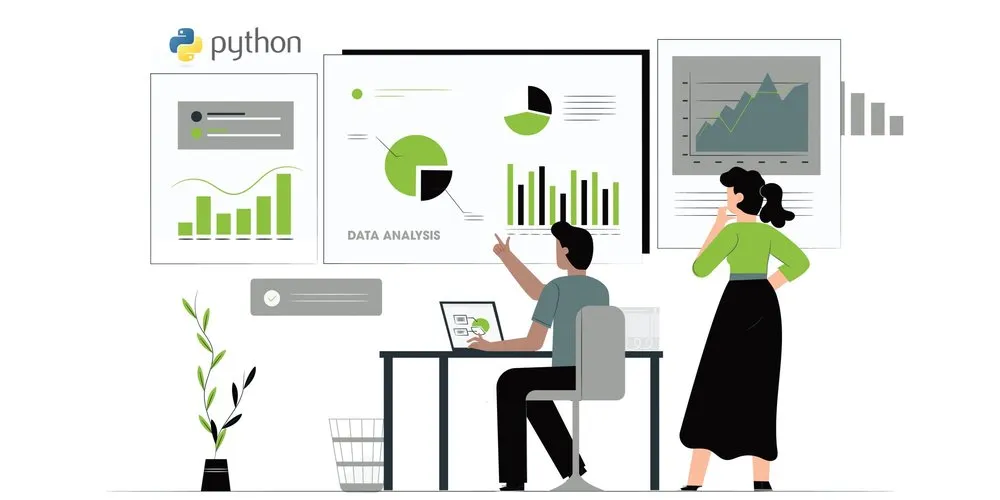
Python programming is internationally one of the fastest-growing languages. Python is used to handle data in an efficient manner. It was designed by Guido van Rossum and first appeared in 1991 in the Netherlands. Data scientists use it frequently to handle their data better because of its high potential in the data science sector. It can be used for scripting applications or building web applications also.
In this era of technology, we have to store, maintain and process data with a lot of data with accuracy. Incorrect handling of this data can be expensive and time-consuming. Many programming languages offer the same, and Python is one of them. All of them are unique in their way. But some features of Python make it different from any other language. First of all, it has an amazing robust ecosystem which makes it easier to read and learn. Secondly, it has a set of data-oriented feature packages. That makes programming easy and speedy for programmers. Programmers must consider Python for data analysis due to its capability and ongoing improvement. It is great for mathematical computations and algorithms.
DATA ANALYSIS
Data analysis refers to collecting raw data and converting it into logical and statistically meaningful data. It is helpful to draw conclusions, generate insights and make better decisions for the company. Nowadays, businesses need to maintain and manage large volumes of the data generated. That helps them to extract useful information. There are many tools through which data analysis can take place. For example- Python, Java, SQL, etc.
IMPORTANCE OF DATA ANALYSIS
1. Through data analysis, we can obtain accurate data for our business strategies. You can get to know about the target set or actual outcome and can make plans accordingly.
2. We can get to know about areas which are overfunded and help to cut down our costs.
3. Data analysis also gives us an idea of future consumer behavioural patterns. It enables us to make future inventions in our products.
4. Through sentiment analysis, we can analyze customer reviews online. This will help us to know about negative or positive reviews about our products. We can make changes to our products accordingly.
5. Data analysis can anchor your graphic design and digital marketing strategies.
6. Data analysis can be used to take action to enhance productivity and business gain.
7. Also, we can collect information about our customer’s demographics. Through this, we can target the consumer group accordingly.
WHAT MAKES PYTHON A SOUND OPTION FOR DATA ANALYSIS?
Python is a data-centric programming language. It offers a lot of facilities and tools to programmers. These tools and features make data analysis easy and cost-effective. Let's take a look at some of its features that make it a sound option for data analysis.
1. Libraries Collection It has a huge collection of tools as libraries. These libraries are available free of cost to any user. These tools save a lot of time and can fix most problems. Some of these libraries are Pandas, NumPy, SciPy, Matplotlib, seaborn, etc.
2. Scalability Python is one of the best languages to scale rapidly. There are many approaches to fixing the same issue. One can handle all from a few records to billions of rows of data using python.
3. Flexibility It is highly flexible, which makes it one of the most requested languages among programmers. We can build data models, and web services can apply data mining, etc., using python. Many new models and algorithms can be built on it.
4. Python Community Python has great community support. It is open-source, which means it’s available freely and, as a result, has a large community. It employs a community-based development model.
5. Easy to learn It is one of the easiest languages to start with. It has a smooth learning curve. Its ecosystem makes it very understandable and readable and a great first programming language to start learning.
6. Data handling capacities We can easily install well-tested packages for data analysis in python. We can also handle data available in bulk. It also contains several libraries with renowned algorithms. NumPy and Pandas are some of the mainly used libraries for data analysis in Python.
ECOSYSTEM OF PYTHON FOR DATA ANALYSIS
Python has one of the best ecosystems among all the languages for data analysis. It has a robust ecosystem that makes it one of the easiest languages also. It is growing gradually, which makes Python a better platform to work on. It makes it understandable and readable, which helps a newbie learn Python. It has a simple syntax, and its commands mimic the English language. It is great for building a data science pipeline and machine learning. It is a general programming language that we can use for production as well as for research & development. Python is easy to write and easily interpretable.
CONCLUSION
Python is a well-structured programming language that is very helpful for any business. Also, it is very easy to learn and understand Python. There are many reasons to select Python, as we discussed all the features above in this article. Its tools and features make it more efficient and unique. It gives us various solutions to the same problem, which makes it flexible and scalable. It has community support as well as it is open-source. Most programmers prefer Python nowadays. Python is a base for any data scientist, especially for data analysis.











